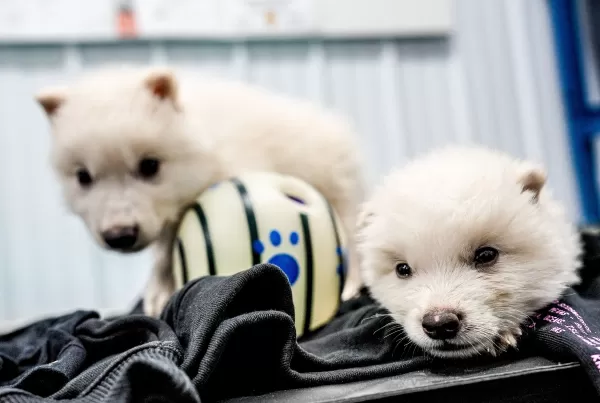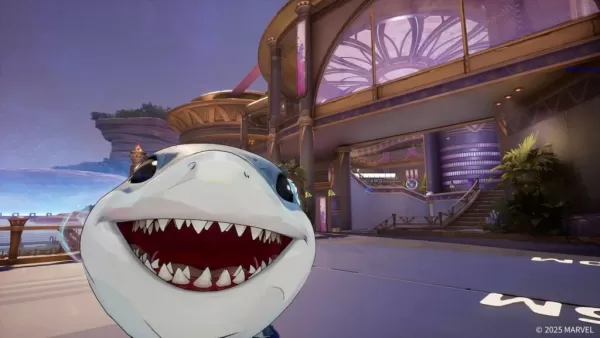Bringing a super-sized canine back from extinction after 12,500 years sounds like the plot of a thrilling movie filled with special effects, but it's a reality thanks to the efforts of Colossal Biosciences. This biotech company has successfully reintroduced three dire wolves into the world, now residing in a secret location in the US.
 Romulus and Remus at three months oldThe mastermind behind this project is Colossal Biosciences, which used the DNA from the common gray wolf, advanced gene-editing techniques, and domestic dog surrogates to bring Romulus, Remus, and their younger sister, Khaleesi, into existence. These puppies embody the essence of what any fan of mythical creatures might dream of—enormous, white, and utterly majestic.
Romulus and Remus at three months oldThe mastermind behind this project is Colossal Biosciences, which used the DNA from the common gray wolf, advanced gene-editing techniques, and domestic dog surrogates to bring Romulus, Remus, and their younger sister, Khaleesi, into existence. These puppies embody the essence of what any fan of mythical creatures might dream of—enormous, white, and utterly majestic.
“I could not be more proud of the team. This massive milestone is the first of many coming examples demonstrating that our end-to-end de-extinction technology stack works,” said Ben Lamm, CEO of Colossal.
“Our team took DNA from a 13,000 year old tooth and a 72,000 year old skull and made healthy dire wolf puppies. It was once said, ‘any sufficiently advanced technology is indistinguishable from magic.’ Today, our team gets to unveil some of the magic they are working on and its broader impact on conservation.”
 Romulus and Remus at one month oldColossal Biosciences is no stranger to the spotlight, having previously created a Colossal Woolly Mouse, designed to mimic the appearance of a mammoth using computational analysis of various mammoth genomes. Despite their achievements, the company faces criticism from those who argue that these dire wolves are essentially normal wolves in a spectacular disguise, suggesting that the existing dire wolf DNA is insufficient for true genetic cloning.
Romulus and Remus at one month oldColossal Biosciences is no stranger to the spotlight, having previously created a Colossal Woolly Mouse, designed to mimic the appearance of a mammoth using computational analysis of various mammoth genomes. Despite their achievements, the company faces criticism from those who argue that these dire wolves are essentially normal wolves in a spectacular disguise, suggesting that the existing dire wolf DNA is insufficient for true genetic cloning.
The mission of Colossal Biosciences extends beyond creating viral sensations and owning extraordinary pets. Their goal is to leverage these breakthroughs to enhance conservation efforts for current species, ensuring their survival for future generations.
“The de-extinction of the dire wolf and an end-to-end system for de-extinction is transformative and heralds an entirely new era of human stewardship of life,” said Dr. Christopher Mason, a scientific advisor and member of the board of observers for Colossal.
“The same technologies that created the dire wolf can directly help save a variety of other endangered animals as well. This is an extraordinary technological leap in genetic engineering efforts for both science and for conservation as well as preservation of life, and a wonderful example of the power of biotechnology to protect species, both extant and extinct.”
To ensure the well-being of these dire wolves, Colossal Biosciences has collaborated with the American Humane Society and the USDA to establish a 2,000+ acre preserve as their home, complete with a dedicated team to care for them.









